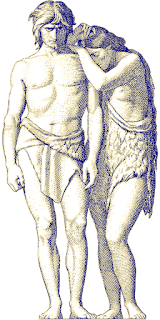THE VEDAS
The Vedas are “the most ancient of the present systems of religion upon the earth, and probably one of the oldest ever known.” Count M. Bjornstjerna. The Vedas are four books, these were written in Sanskrit from which comes all the languages of India. We do not know exactly when the Vedas were written, but we do know that they were written at least more than 3000 years before Christ. Fundamentally, the Vedas prescribe a monotheistic religion. This means that there is only one God, but the Vedas also had hymns praising the things created by God – the sun, moon, stars, earth, fire, and wind.
After the Vedas were written, Sage Vyasa wrote the Vedanta. This gave a more definitive form to the Vedas. Again, the age is not known, but it was approximately 3,100 years before Christ.
The laws of Manu were the next major treatise to be written. These provided rules to live by. These introduced the concept of reincarnation: They also provided deities, which symbolically represent the self-realized man. The laws of Manu also gave the population saints to consider. This was approximately 900 years before Christ (confirm this).
18 Puranas were also written. The principle of the Unity was at this point combined with the Trinity - making one God to three Gods, those of the God of Creation, God of Preservation, and God of Destruction (Brahma, Vishnu, and Shiva).
The Upa-Puranas (the lesser Puranas, which maybe compared with the Legends of the Roman Catholics) exalted a number of pious men to be saints or demi-gods (800 years B.C. approximately).
Gautam Buddha's doctrine caused a major divide among the Brahmins and created Buddhism. This was approximately 600 years before Christ.
What is the correct age of the Vedas ?.
Count M. Bjornstjerna in his book mentioned Mount Stuart Elphinstone’s history of India, written in 1841, Volume 1, Page 267. At that time, King Nandi reigned 400 years before Christ. We know this to be a fact. Before him were six kings for whom Count Bjorn has taken an average reign of 30 years each.
Page 2
The sixth king before Nandi was Ajata Satru. Including, Nandi’s 30 years’ reign then, Ajata Satru commenced his reign approximately 610 years before Christ. Four separate Puranas, records mentioned 47 Kings and the number of years each king reigned, making a total of 1,500 years for the 47 Kings.
Count Bjorn through various calculations arrives at the conclusion that the Great Mahabharat war took place approximately 2000 B.C. (actually we know now from modern planetary software and current research that the Mahabharat war took place 3102 B.C). Rishi Vyasa (which may not be an actual name of Rishi, but in fact a title, which means “commentator”) mentions in the Vedanta that the Vedanta was written around the time of the Mahabharat war (3102 B.C - which by the way was also when the Kaliyuga started).
All ugas start with a major ___ ___, ___, ___.
Therefore, we can say that the Vedanta was composed in 3102 B.C, and the Vedanta is an “abstract” of the Vedas. The Vedas are much older than the Vedanta, but how much older is the question that arises. Sage Vyasa states that the reason he undertook the writing of Vedanta is “that the language of the Vedas is obsolete and unintelligible to the people of his age” – according to Count Bjorn.
The first book of the Vedas – the Rig Veda – is written in a far more ancient Sanskrit, than the last book of the Vedas, which means that many centuries must have passed between the time that the first Veda was written and the last, not even counting the Vedanta, which came much later. This suggests that the Vedas were actually written many hundreds of yeas before the Vedanta.


Comments
Post a Comment